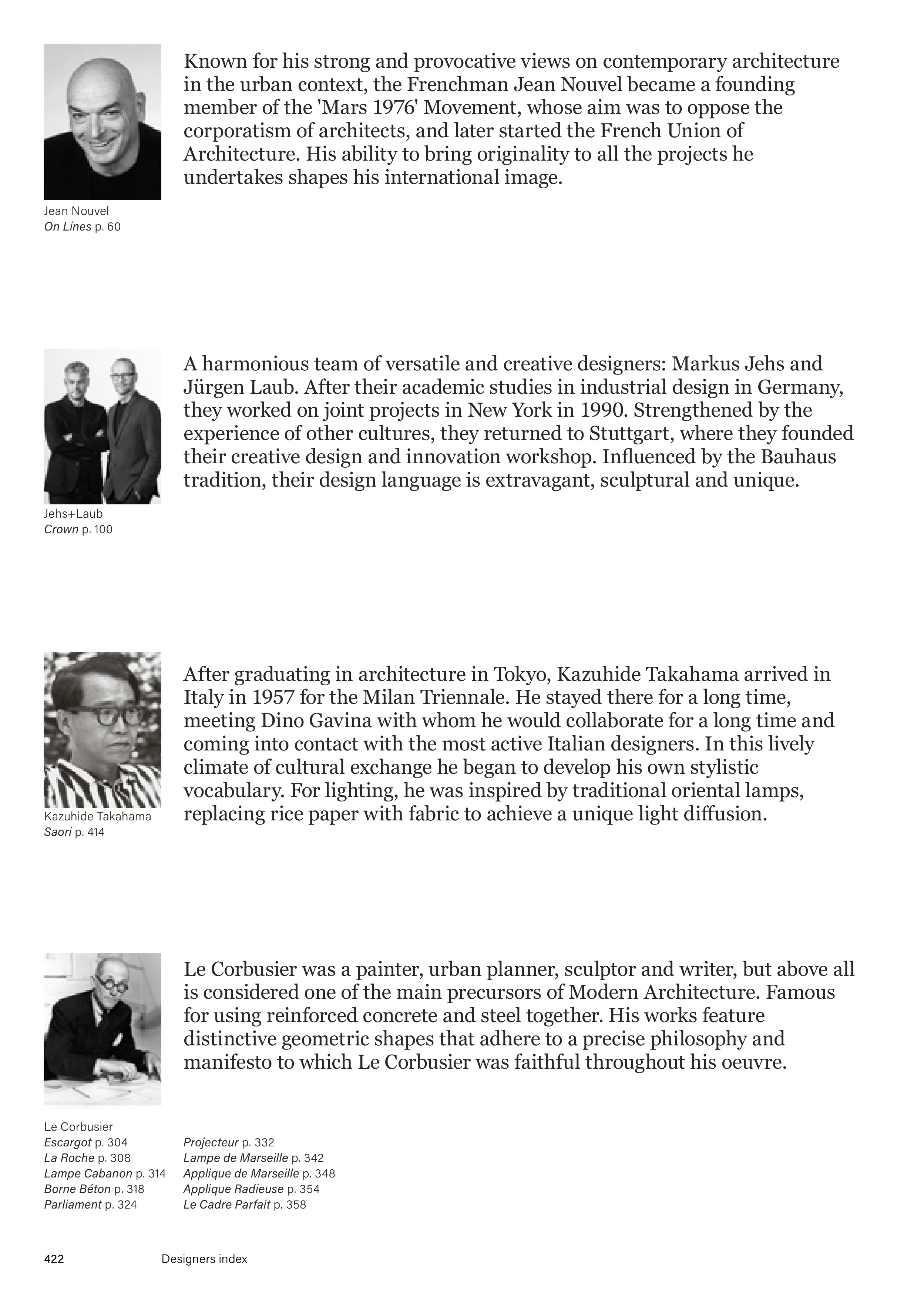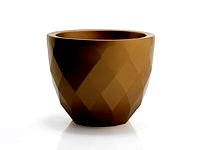422
Jehs+Laub
Crown p. 100
A harmonious team of versatile and creative designers: Markus Jehs and
Jürgen Laub. After their academic studies in industrial design in Germany,
they worked on joint projects in New York in 1990. Strengthened by the
experience of other cultures, they returned to Stuttgart, where they founded
their creative design and innovation workshop. Influenced by the Bauhaus
tradition, their design language is extravagant, sculptural and unique.
Jean Nouvel
On Lines p. 60
Known for his strong and provocative views on contemporary architecture
in the urban context, the Frenchman Jean Nouvel became a founding
member of the 'Mars 1976' Movement, whose aim was to oppose the
corporatism of architects, and later started the French Union of
Architecture. His ability to bring originality to all the projects he
undertakes shapes his international image.
Kazuhide Takahama
Saori p. 414
After graduating in architecture in Tokyo, Kazuhide Takahama arrived in
Italy in 1957 for the Milan Triennale. He stayed there for a long time,
meeting Dino Gavina with whom he would collaborate for a long time and
coming into contact with the most active Italian designers. In this lively
climate of cultural exchange he began to develop his own stylistic
vocabulary. For lighting, he was inspired by traditional oriental lamps,
replacing rice paper with fabric to achieve a unique light diffusion.
Le Corbusier
Escargot p. 304
La Roche p. 308
Lampe Cabanon p. 314
Borne Béton p. 318
Parliament p. 324
Projecteur p. 332
Lampe de Marseille p. 342
Applique de Marseille p. 348
Applique Radieuse p. 354
Le Cadre Parfait p. 358
Le Corbusier was a painter, urban planner, sculptor and writer, but above all
is considered one of the main precursors of Modern Architecture. Famous
for using reinforced concrete and steel together. His works feature
distinctive geometric shapes that adhere to a precise philosophy and
manifesto to which Le Corbusier was faithful throughout his oeuvre.
Designers index



